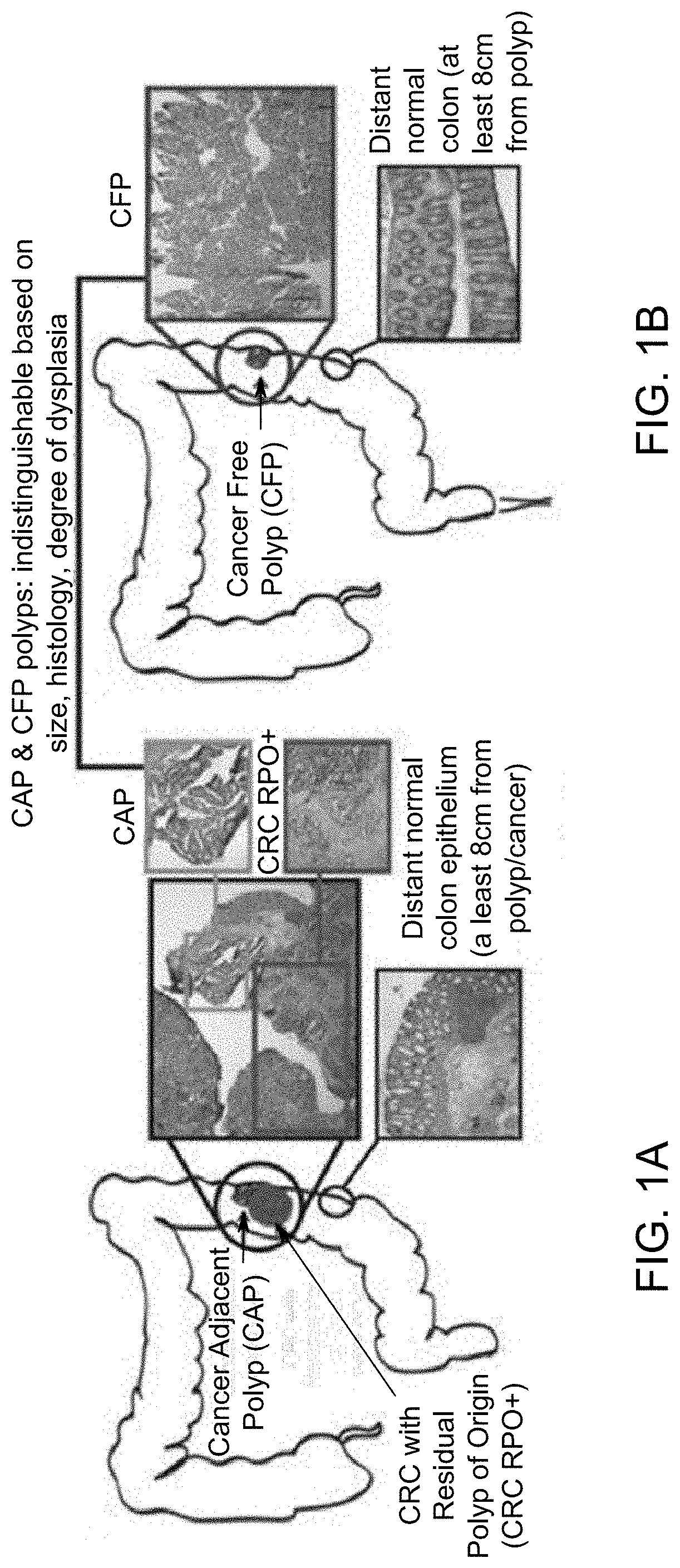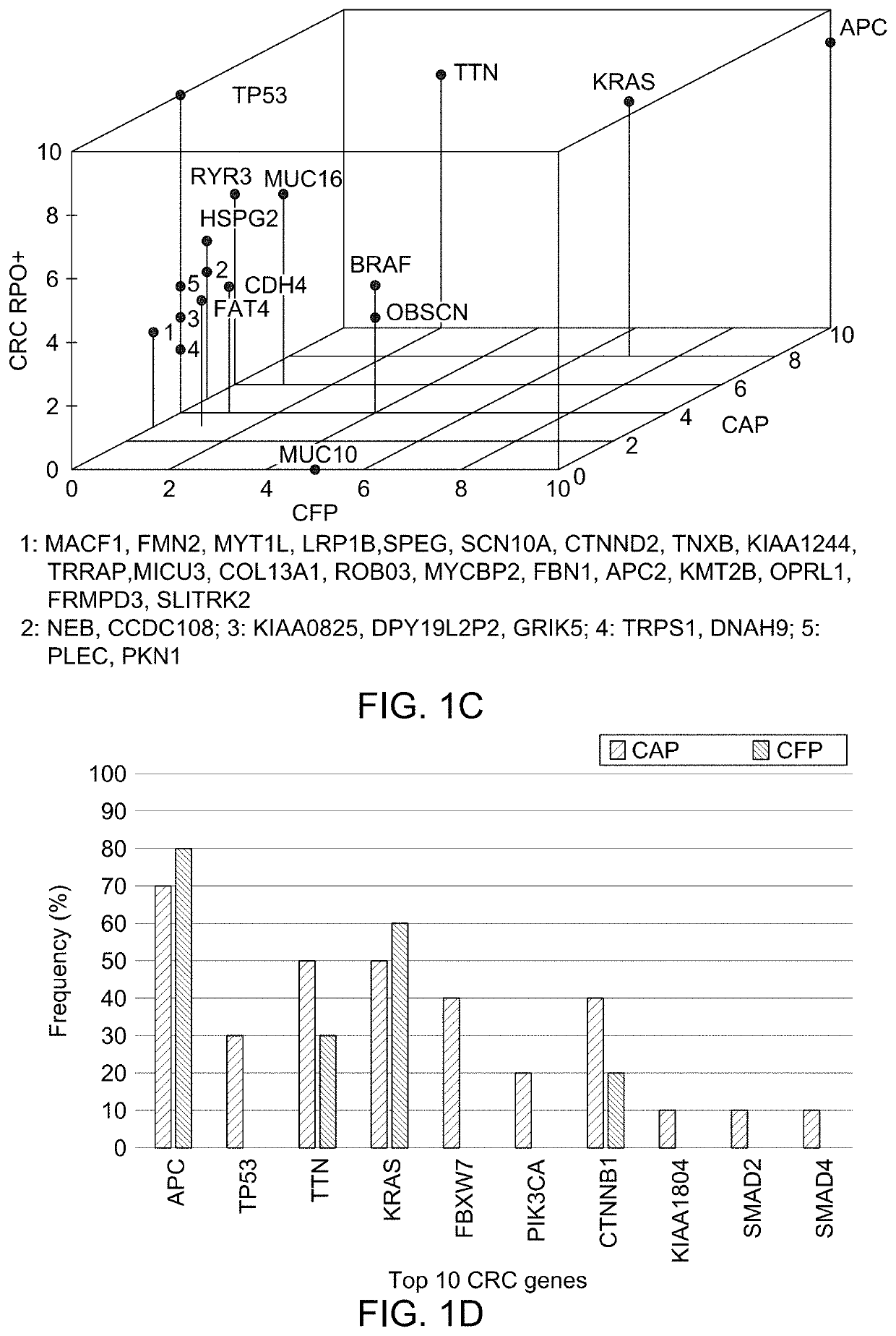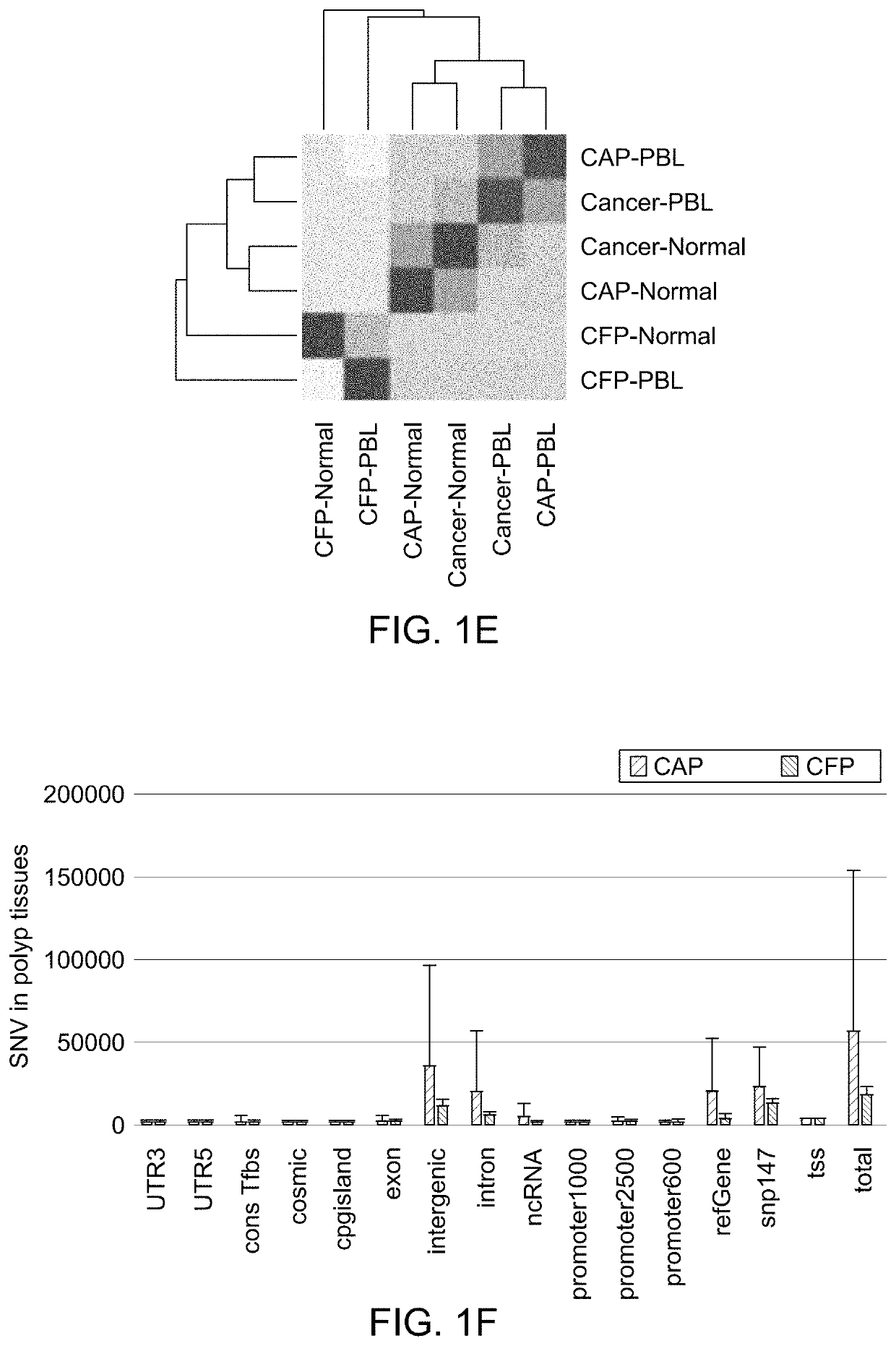Assessing and treating mammals having polyps
a technology for mammals and polyps, applied in the field of mammals having polyps, can solve problems such as diagnosis that fail to define features
- Summary
- Abstract
- Description
- Claims
- Application Information
AI Technical Summary
Benefits of technology
Problems solved by technology
Method used
Image
Examples
example 1
Characterization of Colorectal Adenomas with and without Malignancy Reveals Distinguishing Genome, Transcriptome and Methylome Alterations
[0061]In order to investigate differences between polyps with and without cancer, CAP and CFP tissues were characterized based on their genetic, expression and methylation patterns. A key element in our approach is the comparison of polyp tissue with and without cancer based on over five years of follow up.
[0062]The identification of the molecular profiles that differentiate CAPs from CFPs has the potential to lead to tailored colonoscopy surveillance intervals. Adding defined molecular features to assess a polyp's risk for malignancy will improve the impact of surveillance on CRC prevention. Ultimately, definition of molecular alterations linked with progression of polyps to cancer could lead to modifiable targets for chemoprevention or other preventive interventions, and may also serve up candidate markers for screening.
Results
[0063]Time Lapse M...
example 2
Characterization of Colorectal Adenomas with and without Malignancy Reveals Distinguishing Genome, Transcriptome and Methylome Alterations
[0091]Whole Genome Sequencing and RNA-sequencing were performed (as described in Example 1) on polyps that were histologically and morphologically identical, but differ in that they have been removed and never recurred (POP-NR), recurred but were either cured via colonoscopy or surgery (POP-R), or recurred and presented with colorectal cancer (POP-CRC).
[0092]Whole Genome Sequencing and RNA-sequencing data indicated that somatic mutation prevalence (FIG. 24A), copy number variation (FIG. 24B), and gene expression (FIG. 24C) differed in POP-NR, POP-R, and POP-CRC polyps. For all comparisons, there were genes that overlap between the POP categories and genes that were unique to each category, with the most significant difference between the polyp tissues belonging to the POP-NR and POP-CRC categories.
PUM
| Property | Measurement | Unit |
|---|---|---|
| Volume | aaaaa | aaaaa |
| Fraction | aaaaa | aaaaa |
| Fraction | aaaaa | aaaaa |
Abstract
Description
Claims
Application Information
 Login to View More
Login to View More - R&D
- Intellectual Property
- Life Sciences
- Materials
- Tech Scout
- Unparalleled Data Quality
- Higher Quality Content
- 60% Fewer Hallucinations
Browse by: Latest US Patents, China's latest patents, Technical Efficacy Thesaurus, Application Domain, Technology Topic, Popular Technical Reports.
© 2025 PatSnap. All rights reserved.Legal|Privacy policy|Modern Slavery Act Transparency Statement|Sitemap|About US| Contact US: help@patsnap.com



